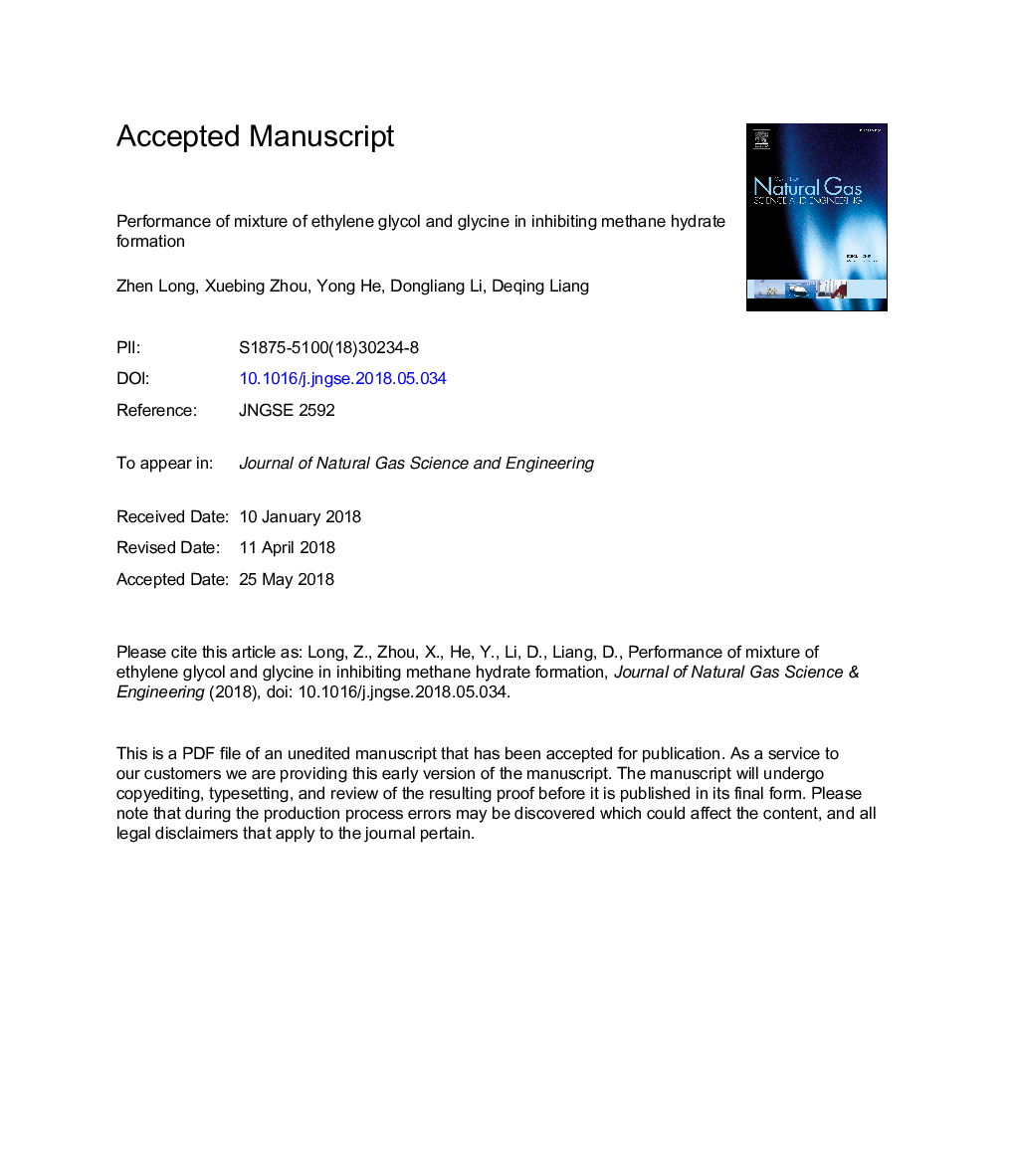| Article ID | Journal | Published Year | Pages | File Type |
|---|---|---|---|---|
| 8127857 | Journal of Natural Gas Science and Engineering | 2018 | 32 Pages |
Abstract
This study investigates synergistic hydrate inhibition performance of conventional thermodynamic hydrate inhibitors (THIs) combined with amino acids. For this purpose, hydrate-liquid-vapor equilibrium (HLVE) data for methane were measured in the presence of mixed ethylene glycol and glycine using 1:1 mixtures at concentrations of 1Â wt% (0.5Â wt% ethylene glycol +0.5Â wt% glycine), 5Â wt% (2.5Â wt% ethylene glycol +2.5Â wt% glycine), 10Â wt% (5Â wt% ethylene glycol +5Â wt% glycine), 20Â wt% (10Â wt% ethylene glycol +10Â wt% glycine), and 30Â wt% (15Â wt% ethylene glycol +15Â wt% glycine) by the isochoric pressure search method. Thermodynamic inhibition efficiency has been investigated by observing the shifts in the hydrate equilibrium curves and trends of the calculated hydrate suppression temperatures at various concentrations and pressures. The results were also obtained for ethylene glycol, glycine and ionic liquids for comparison. An improving inhibition performance by mixing ethylene glycol and glycine was observed, indicating the potential of amino acids as inhibition synergists in hydrate exploitation, oil/gas transportation and flow assurance. Molar hydrate dissociation enthalpies were calculated by using the Clausius-Clapeyron equation and showed that the interaction of ethylene glycol and glycine has no impact on the hydrate structure.
Related Topics
Physical Sciences and Engineering
Earth and Planetary Sciences
Earth and Planetary Sciences (General)
Authors
Zhen Long, Xuebing Zhou, Yong He, Dongliang Li, Deqing Liang,
